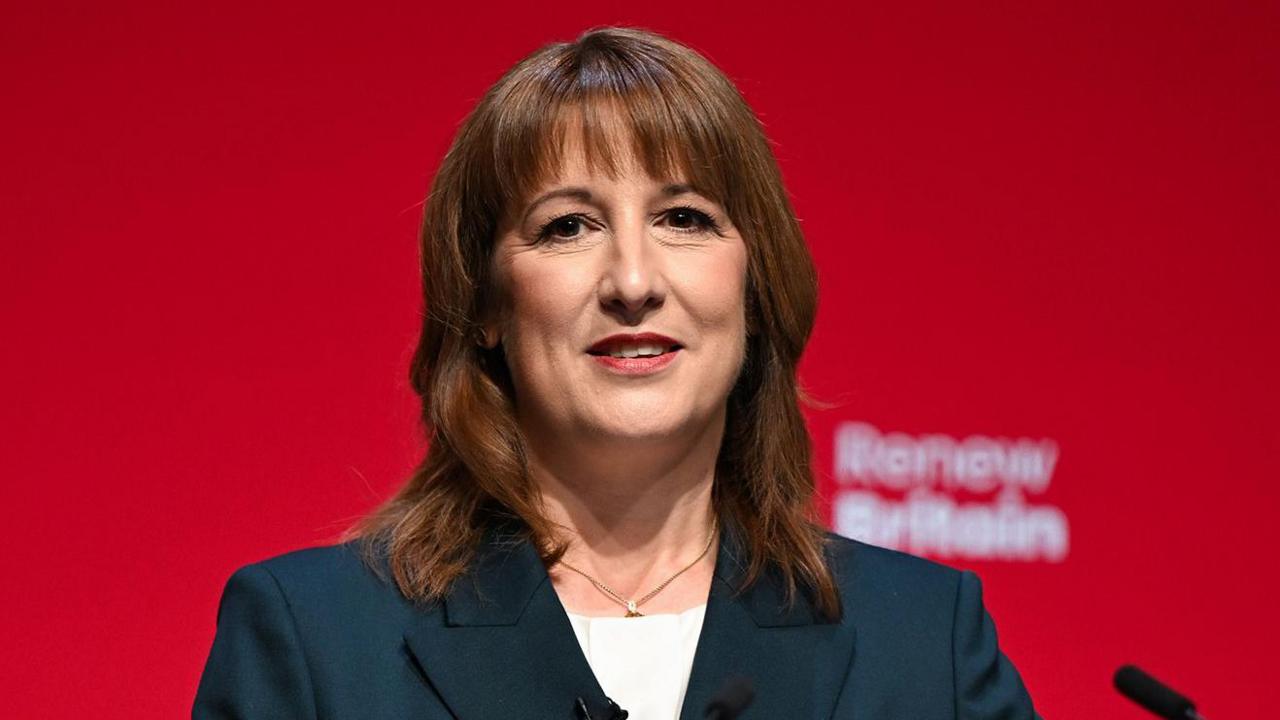Stable inflation gives chancellor space to break doom loop

- Published
It might be the peak, or perhaps the mini-summit for the current bump in inflation.
Economists across the city suggest it's downhill from here, after the inflation rate for September remained static at 3.8%, failing to breach the expected 4% mark.
In absolute terms inflation remains too high, higher than other similar countries, and too visible in the everyday items seen in the shops. Just under double the official target of 2% set for the Bank of England.
But the direction of travel matters significantly.
Even if it should stay around this level for the rest of the year, some significant falls are on the way in the spring, as various regulated price rises last year drop out of the calculation.
It would be a much happier place if it were 2.5% in April.
However, it is worth remembering that even as the International Monetary Fund (IMF) pointed to the highest inflation in the G7 this year and next, it also said inflation would fall back to the 2% target by the end of next year.
Crucially retail industry experts now assert food price inflation has also peaked, though prices remain at painful levels for many.
This lowers - though does not eliminate - the chances of self-fulfilling expectations of inflation in the way wages and prices are set. This is the critical factor for the setting of interest rates.
My immediate thought was the "Santa" rate cut from Andrew Bailey may be back on the table for December. But then I looked again at the information underlying some of last week's numbers from the IMF.
Buried in the forecast is the suggestion of four rate cuts over the next year to take interest rates down to 3%. The only reason a cut is not expected next month, according to the IMF, is because it is too close to the Budget.
A more benign inflation outlook suddenly makes that look less fanciful. The US Federal Reserve rate cuts are also in the background.
When is the Budget and what might be in it?
- Published20 hours ago
The markets seem to be reassessing their view here and around the world.
The effective interest rates on UK government debt fell sharply, regardless of whether those loans were for two or for 30 years. Ten-year rates fell to the lowest level this year, while two-year rates dropped to the lowest since last August.
This could save a few billion from the gap in the Budget calculations, at just the right time for the chancellor.
Even more important, it shows the UK is not being treated as an outlier by the markets.
The chancellor went to some effort in her off-the-cuff UK sales pitch to worldwide investors in the US last week.
Britain was, she said, the best place to invest and trade globally, that she was going to sort out Brexit-related economic problems and the UK had the fastest declining deficit in the G20.
The Budget is going to be a challenge, but catastrophic suggestions about British bankruptcy and bailouts seem quite spectacularly off the mark, assuming that is, that the government does have nearly 400 MPs for its agenda.
No one wants to be caught on the wrong side of the very real chance of a tech market crash, or unpredictable spike in the US-China trade war, or perhaps any unexpected innovations in the appointment of the new chair of the Federal Reserve in the US.
The inflation number and gilt rate falls offer the chance of some respite, for a break in the circle of doom.
The question is whether the tax measures Reeves needs to close even a smaller Budget gap, risk bringing it back through another door.